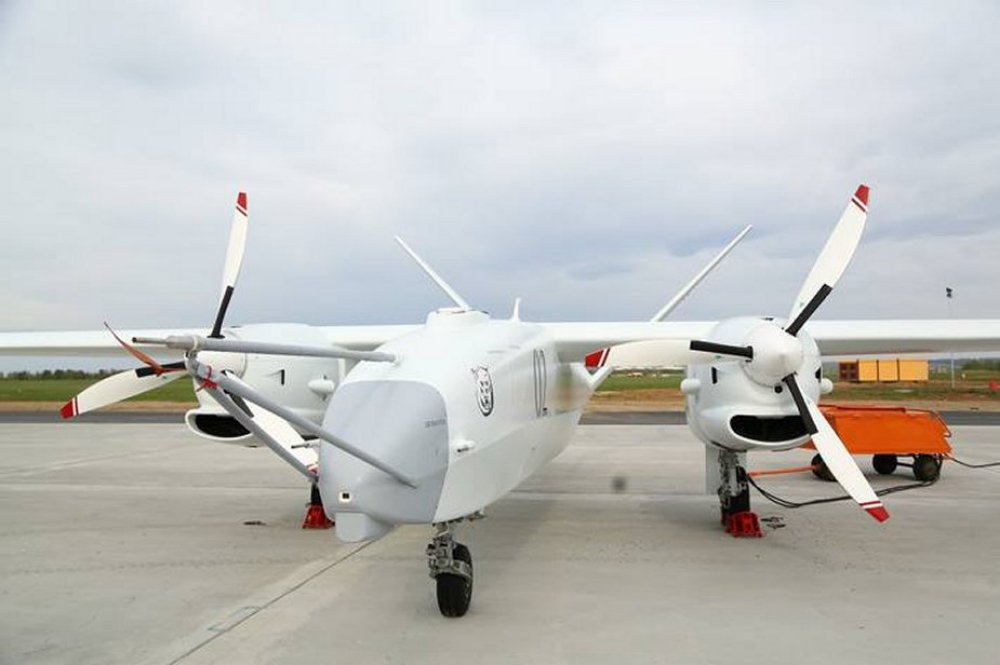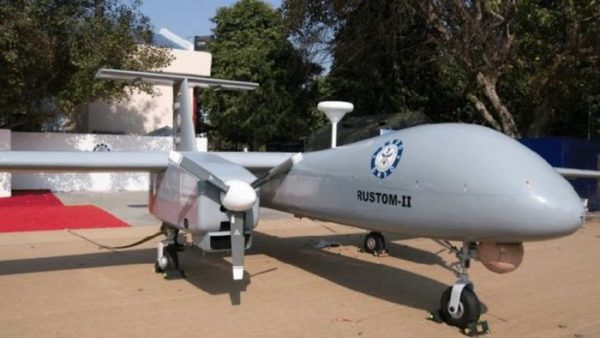Rustom-2 Drone Successfully Flight-Tested, India Goes For Armed Heron UAVs
Rustom-2 is capable of carrying different combinations of payloads depending on the mission objectives including synthetic aperture radar, electronic intelligence systems and situational awareness systems. Rustom-2 is a medium-altitude long-endurance unmanned aerial vehicle (UAV), designed to carry out surveillance and reconnaissance roles for the Indian Armed Forces
Overcoming the initial program setbacks, the Defence Research and Development Organization (DRDO) on Friday flight tested the Rustom-2 medium altitude long endurance indigenous prototype drone and achieved eight hours of flying at an altitude of 16000 feet at Chitradurga, Karnataka. The prototype is expected to achieve a height of 26000 feet and endurance of 18 hours by 2020 end.
Rustom-2 is capable of carrying different combinations of payloads depending on the mission objectives including synthetic aperture radar, electronic intelligence systems and situational awareness systems. It has a satellite communication link to relay situation in the battle theatre on real time basis. “ The Rustom-2 had one hour of fuel left after eight hours of test flying at Challakere aeronautical test range in Chitradurga district of Karnataka and had achieved the test flight ceiling,” said a senior official.
While the DRDO expects Rustom-2 surveillance drone to match the specifications of the Israeli Heron unmanned aerial vehicle used by the Indian Air Force and Navy, it has revitalized its drone program with a new mission head and objectives. The push to Rustom-2 program was given after the People’s Liberation Army (PLA) tried to occupy Indian territory in Ladakh on the basis of a 1959 cartographical claim on the Line of Actual Control (LAC). The PLA has Wing Loong II armed drones in its arsenal and has even given four of them to Pakistan to protect the CPEC corridor and Gwadar port.
Although the Rustom-2 will have to undergo test and user trials before inducted in the Indian military, the Ministry of Defence is currently negotiating with Israeli Aerospace Industry (IAI) to not only upgrade the existing fleet of Heron drone but also arm them with air to surface missile and laser guided bombs.
According to South Block officials, the technical upgradation and arming of Heron drone is at contract negotiating committee level after being cleared by the Defence Acquisition Committee (DAC). The project will be cleared at the level of the Cabinet Committee on Security (CCS).
The Heron upgrade involves installing a satellite communication link so that there is no time gap in relaying situation on ground as well as installing hard points on the wings for missiles and laser guided bombs. While the Israelis have kept their armed drone program under cover, the Heron has a proven weaponized version.
Besides, India has also decided to go in for American MQ-9B armed drone instead of Sea Guardian surveillance drone with cost and numbers being worked out. Clearly, the future belongs to stand-off weapons and India this time will not miss the bus.
The Assisted Reproductive Technology (ART) Regulation Bill 2020, that aims to regulate clinics offering IVF and other assisted reproductive services in the country, has been referred to the standing committee on health and family welfare for examination. The committee has been asked to report with their suggestions within three months.
Chairman, Rajya Sabha, in consultation with the Speaker of Lok Sabha referred the Bill to the standing committee earlier this week.
The bill—which was introduced in the Lok Sabha during the monsoon session of Parliament in September— proposes constitution of a national board that will set the minimum standards of physical infrastructure, laboratory and diagnostic equipment and expert manpower to be employed by clinics and banks while offering their services.
There will be a National Registry and Registration Authority to maintain a central database and assist the national board in its functioning. The bill also proposes stringent punishment for those practising sex selection, sale of human embryos or gametes (reproductive cells), and running agencies, rackets and organisations that violate the law.
Assisted reproductive technology services have grown significantly in the past few years in India, and the country has one of the highest growths documented in ART centres and the number of ART cycles (the process in which an ART procedure is performed each year).
India has become one of the major centres of this global fertility industry, with reproductive medical tourism too becoming popular. Clinics in India offer most ART services — gamete donation, intrauterine insemination (IUI), IVF etc., and gestational surrogacy. However, there is till now no standardisation of protocols, and reporting to the authorities is still inadequate.
The exact number of clinics running in the country is also not clear even as authorities estimate that close to 3,000 of such clinics may be operational across the country, with little or no supervision. The new law—meant to help put in these checks and a regulatory framework—will also make it mandatory for these clinics to register with the government and share information about the services they offer.
The bill is the most recent in a series of legislations that have been introduced to protect and safeguard the reproductive rights of women, including the Surrogacy Bill and the Medical Termination of Pregnancy amendment Bill.
Rustom-2 is capable of carrying different combinations of payloads depending on the mission objectives including synthetic aperture radar, e...

www.indiandefensenews.in








